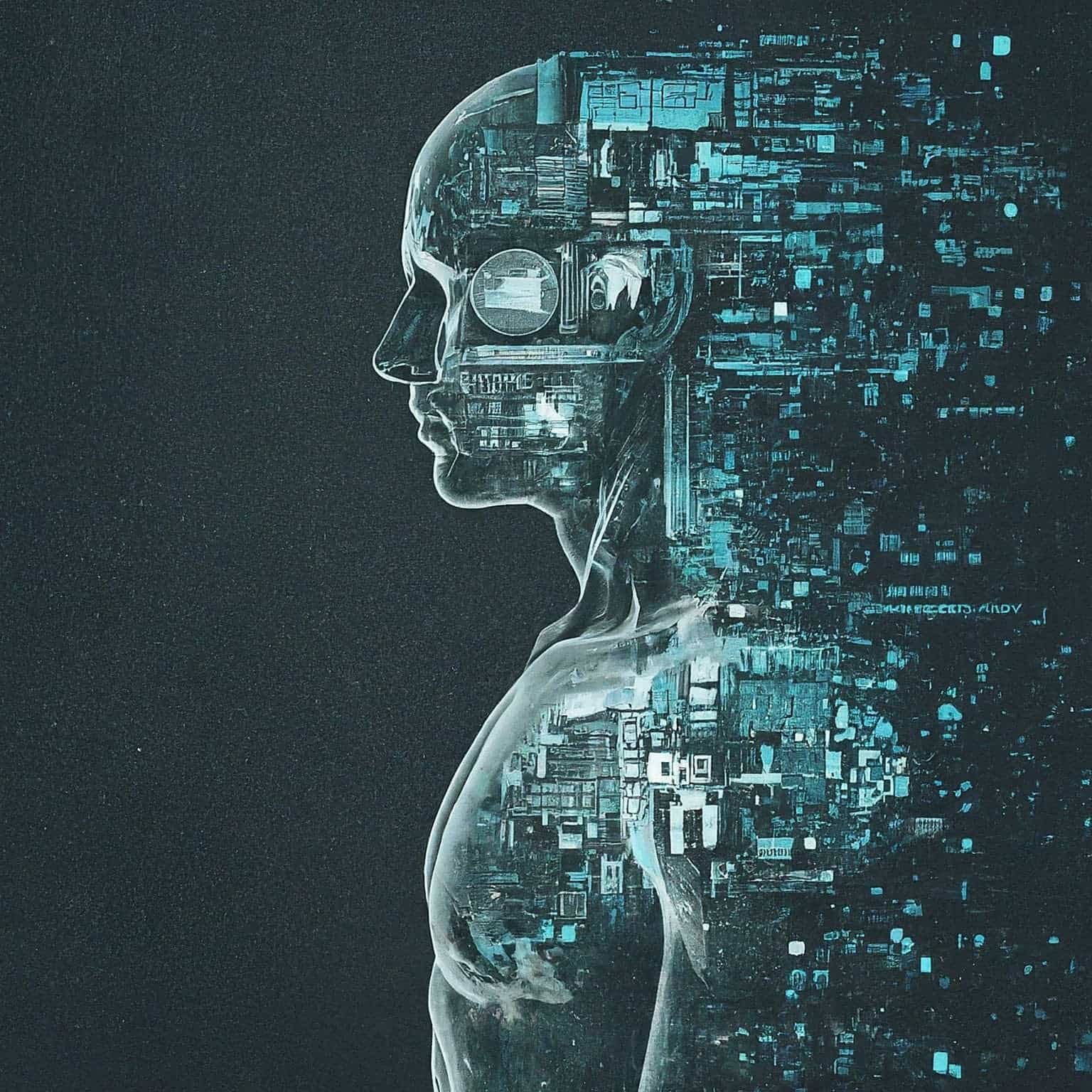Teletherapy, also known as online therapy, is the practice of providing mental health treatment remotely through digital platforms such as video calls and messaging apps. It offers convenience, accessibility, and effectiveness, making it a popular choice for individuals who may find traditional in-person therapy challenging to access. With our lives increasingly intertwined with technology, teletherapy is playing a vital role in reaching and supporting those in need of mental health care.”
Teletherapy offers a lifeline to those who may live in remote areas, have mobility issues, or face other barriers to seeking therapy in person. It breaks down geographical boundaries and allows individuals to connect with licensed therapists from the comfort of their own homes. In today’s fast-paced world, where time is a precious commodity, teletherapy offers the flexibility to schedule sessions at times that work best for the individual, without the need to travel to a therapist’s office.
However, as with any rapidly evolving field, it’s crucial to stay informed about the latest trends and tools in teletherapy. Just as technology continues to advance, so too do the methods and techniques used in online mental health treatment. By staying abreast of these developments, therapists can ensure they are providing the best possible care to their clients.
key takeaways
- Clarity is Key: Communicate your message or objective to ensure understanding among your audience or team members.
- Adaptability Matters: Be flexible and ready to adjust your plans or strategies in response to changing circumstances or feedback.
- Continuous Learning: Embrace a mindset of continuous learning and improvement to stay relevant and grow personally and professionally.
- Collaboration is Powerful: Working together with others can lead to innovative solutions and better outcomes than working alone.
- Resilience is Vital: Develop resilience to overcome setbacks and challenges, allowing you to persevere in the face of adversity.
- Prioritize Self-Care: Take care of your physical, mental, and emotional well-being to maintain peak performance and avoid burnout.
- Celebrate Successes: Acknowledge and celebrate achievements, both big and small, to boost morale and motivation within your team or community.
- Stay Focused on Goals: Keep your long-term objectives in mind and stay focused on taking actions that align with them, even when faced with distractions or obstacles.
Embracing Change: The Exciting Trends Reshaping Teletherapy
In the fast-paced world we live in, where time is precious and life’s demands can be overwhelming, accessing mental health support has become more important than ever. Fortunately, the landscape of therapy is changing, and it’s changing for the better. Let’s take a look at some of the exciting trends reshaping teletherapy and making mental health support more accessible and effective for everyone.
| Trend | Description |
| Increased Accessibility and Convenience | Teletherapy eliminates geographical constraints and offers flexibility in scheduling, making therapy more accessible to individuals with busy schedules. |
| Expansion of Teletherapy Platforms | The growing number of teletherapy platforms offers a range of features such as video conferencing and appointment scheduling, facilitating therapist-client connections. |
| Personalization and Customization | Therapists can tailor treatment plans to individual needs, preferences, and goals, ensuring a personalized approach to therapy. |
| Adaptive Interventions Based on Data Analytics | Data analytics enables therapists to analyze client behavior patterns and adjust interventions in real-time, maximizing therapy effectiveness and improving outcomes. |
| Integration of Innovative Therapies | Teletherapy platforms are incorporating innovative approaches like virtual reality therapy, providing new avenues for addressing mental health challenges. |
| Artificial Intelligence (AI) Chatbots | AI-powered chatbots offer immediate support and guidance and can monitor client progress over time, enhancing therapeutic support and intervention. |
| Cultural Competency and Diversity | Teletherapy services prioritize cultural competence, addressing language and cultural barriers to provide inclusive and customized interventions. |
Exploring the Exciting Tools Shaping Online Mental Health Treatments
In today’s digital age, mental health support is just a click away. With the advancement of technology, online mental health treatments are rapidly evolving to provide more accessible, convenient, and effective care for individuals around the globe. Let’s delve into the tools shaping this future:
| Feature / Technology | Description |
| Teletherapy Platforms | Connect patients with licensed therapists through video calls or messaging, allowing therapy sessions to be conducted remotely from the comfort of home. |
| Scheduling and Appointment Management | Schedule appointments, manage session bookings, and set reminders for therapy sessions. |
| Secure Messaging and File Sharing | Communicate securely with therapists through encrypted messaging and share files or documents related to therapy sessions. |
| Interactive Exercises and Resources | Access interactive exercises and resources to support therapy sessions and enhance treatment outcomes. |
| Mobile Applications and Wearable Devices | Use smartphone apps or wearable devices to track mood, behavior patterns, and sleep, providing insights into mental health over time. |
| Real-Time Support and Interventions | Receive real-time support and interventions through chatbots or peer-to-peer networks, offering coping strategies whenever needed. |
| AI-Driven Diagnostics and Interventions | Utilize AI-powered tools to analyze text or speech, understand emotions, and provide personalized recommendations for mental well-being. |
| Predictive Modeling for Early Detection | AI algorithms predict potential mental health issues based on behavior patterns, enabling early interventions to prevent escalation. |
| Virtual Reality (VR) and Augmented Reality (AR) | Immerse in virtual environments for therapy sessions, offering exposure therapy and immersive experiences for addressing mental health challenges. |
| Immersive Therapy Experiences | Engage in therapy sessions that involve facing fears in simulated environments or practicing mindfulness in serene landscapes. |
| Exposure Therapy in Simulated Environments | VR technology creates controlled environments for exposure therapy, allowing patients to confront fears or triggers safely and gradually desensitize over time. |
Embracing Technology in Therapy: Enhancing Care for Patients and Therapists Alike
In the ever-evolving landscape of therapy practices, integrating technology has become more than just a trend—it’s a game-changer. Let’s explore how these advancements benefit both patients and therapists while navigating the ethical considerations and challenges that come with them.
Benefits for Patients
- Increased Access to Care: Technology breaks down barriers to accessing therapy by offering online sessions, and reaching those in remote areas or with mobility issues.
- Enhanced Engagement and Adherence: Interactive tools and apps keep patients engaged between sessions, encouraging adherence to treatment plans and fostering better outcomes.
- Continuity of Care and Support: With technology, therapy extends beyond the confines of traditional sessions, providing continuous support and resources for patients to access when they need it most.
Benefits for Therapists
- 1. Streamlined Administration and Documentation: Digital platforms streamline administrative tasks and documentation, allowing therapists to focus more on patient care and less on paperwork.
- Expanded Reach and Client Base: By offering online services, therapists can reach a broader audience, breaking geographical limitations and attracting clients who prefer virtual sessions.
- Opportunities for Professional Development: Technology offers avenues for therapists to engage in online training, stay updated on advancements in their field, and connect with peers globally, enriching their practice.
Enhancing Mental Wellness: How Technology is Shaping the Future of Mental Health Care
In our ever-evolving world, breakthroughs in technology are not just transforming the way we communicate or work, but also revolutionizing how we approach mental health care. From personalized treatment recommendations to ethical guidelines, here are ten exciting developments on the horizon that promise to enhance mental wellness for everyone.
Step 1 Advancements in AI and Machine Learning: Imagine having a virtual assistant that understands your unique needs and provides tailored support whenever you need it. Thanks to advances in artificial intelligence (AI) and machine learning, such innovations are becoming a reality. These technologies can analyze vast amounts of data to offer personalized insights and suggestions for managing mental health.
Step 2 Personalized Treatment Recommendations: One size does not fit all when it comes to mental health treatment. With personalized treatment recommendations, individuals can receive therapies and interventions that are specifically tailored to their unique circumstances, preferences, and challenges. This approach ensures that each person receives the most effective support for their mental well-being.
Step 3 Improved Predictive Modeling for Risk Assessment: Early intervention is key to preventing mental health crises. By leveraging improved predictive modeling, mental health professionals can identify individuals at risk of developing mental health disorders before symptoms fully manifest. This proactive approach allows for timely interventions and support to mitigate potential challenges.
Step 4 Integration of Biometric Data: Our bodies hold valuable insights into our mental health. By integrating biometric data, such as heart rate variability or sleep patterns, into mental health assessments, professionals can gain a more comprehensive understanding of a person’s well-being. This holistic approach enables more targeted and effective interventions.
Step 5 Monitoring Physiological Markers for Mental Health: Physical and mental health are interconnected. Monitoring physiological markers, like changes in heart rate or cortisol levels, can provide valuable indicators of mental health status. By tracking these markers over time, individuals and their healthcare providers can better understand how mental well-being influences physical health and vice versa.
Step 6 Biofeedback Interventions for Self-Regulation: Learning to manage stress and regulate emotions is essential for maintaining good mental health. Biofeedback interventions use real-time data from physiological responses, such as breathing or muscle tension, to teach individuals how to control their body’s responses to stress. These interventions empower individuals with practical skills for self-regulation and stress management.
Step 7 Collaborations Between Technology and Mental Health Professionals: The synergy between technology and mental health professionals is a powerful force for positive change. Collaborative efforts allow for the development of innovative tools and interventions that address the diverse needs of individuals seeking mental health support. By working together, professionals can leverage each other’s expertise to deliver more effective care.
Step 8 Co-Designing Interventions for Specific Populations: Mental health challenges can vary widely among different populations, from adolescents to older adults, and from urban to rural communities. By involving members of specific populations in the design process, interventions can be tailored to meet their unique needs and preferences. Co-design approaches ensure that interventions are culturally sensitive, accessible, and relevant to the individuals they aim to support.
Step 9 Ethical Guidelines for the Responsible Use of Emerging Technologies: As technology continues to advance, it’s crucial to establish ethical guidelines to ensure its responsible and ethical use in mental health care. These guidelines govern issues such as data privacy, consent, and the equitable distribution of resources. By upholding ethical standards, we can harness the full potential of technology while safeguarding the well-being and rights of individuals.
FAQS
- How can technology improve mental health care?
- Technology enhances mental health care through personalized treatment recommendations, AI-driven risk assessments, and biometric data integration. Biofeedback interventions aid self-regulation. These advancements improve accessibility, effectiveness, and collaboration, offering tailored support based on individual needs and preferences, ultimately enhancing overall mental health care delivery.
- Are there ethical concerns regarding the use of technology in mental health care?
- Technology in mental health care brings ethical challenges like privacy issues due to data collection, requiring informed consent, and robust data security. Addressing biases in AI algorithms and ensuring fair access to interventions are crucial for upholding ethical standards and protecting individuals’ well-being.
Conclusion
In conclusion, the intersection of technology and mental health care offers a wealth of opportunities to enhance well-being and support individuals on their mental health journey. From personalized treatment recommendations to collaborative interventions tailored to specific populations, these advancements promise to make mental health care more accessible, effective, and compassionate.
By embracing ethical guidelines and fostering collaborations between technology and mental health professionals, we can harness the full potential of emerging technologies while safeguarding the rights and dignity of individuals. Together, let us continue to innovate, advocate for mental wellness, and ensure that everyone has access to the support they need to thrive. With technology as our ally, we can create a future where mental health care is inclusive, empowering, and transformative for all.



